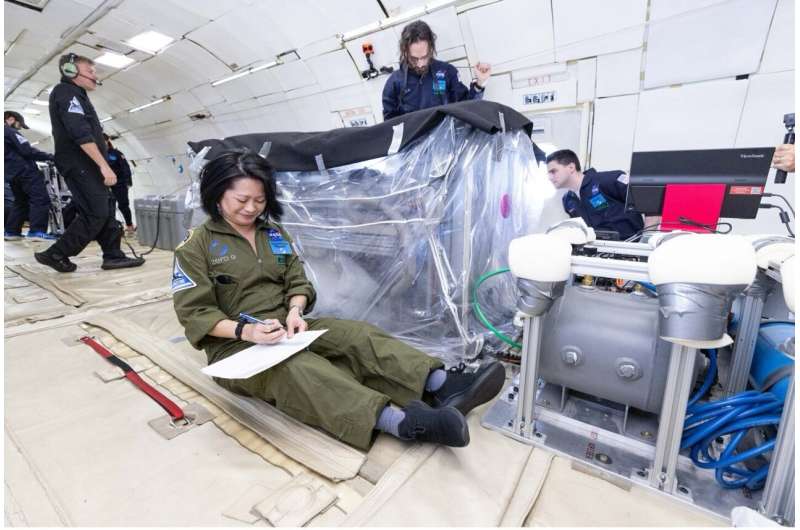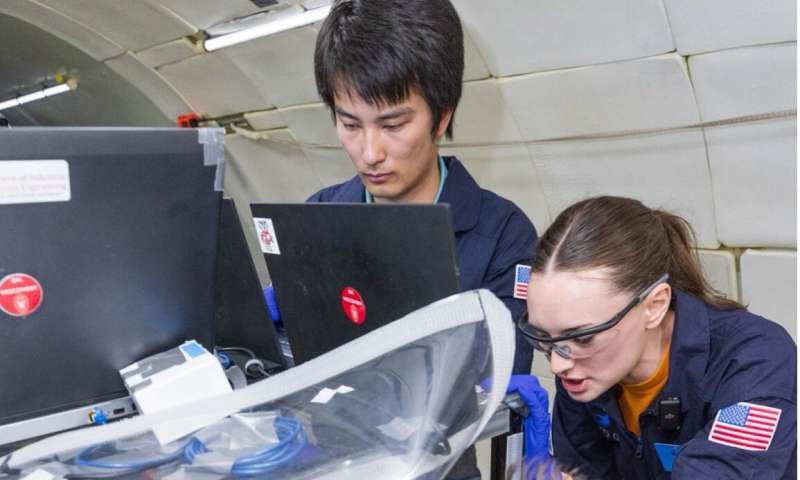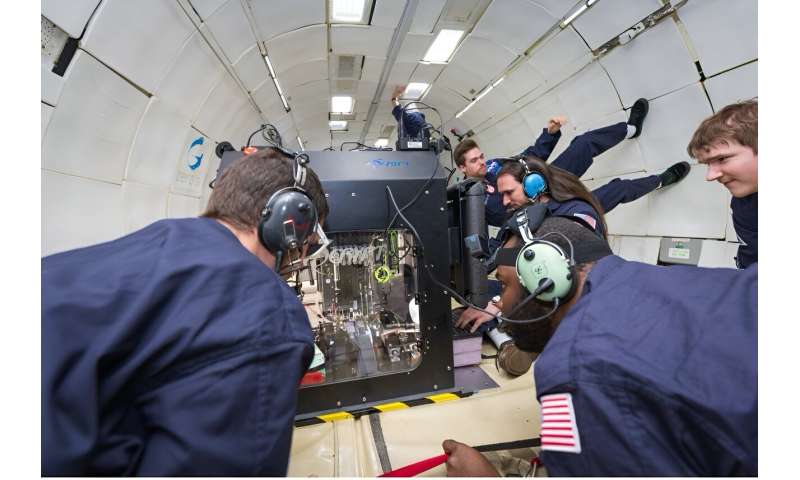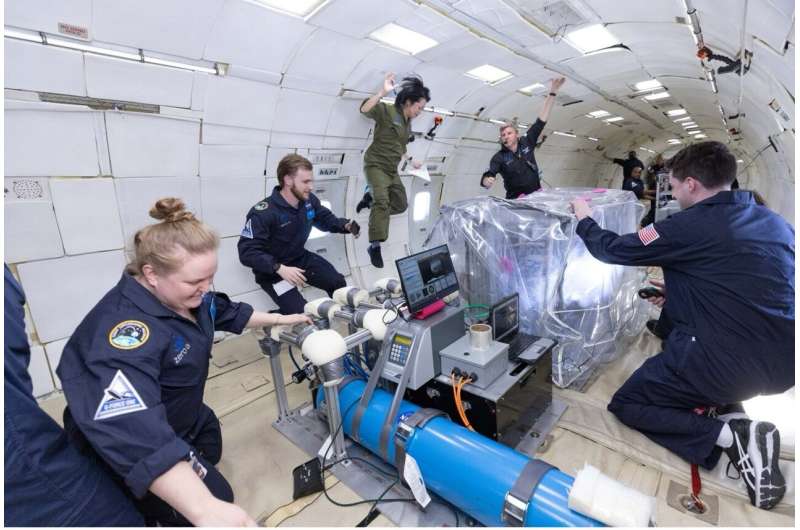Such reductions indicate the potential for mass savings for tool systems used in space.
This flight test aims to establish the magnitude of force reduction achieved by an ultrasonic tool on the moon and Mars. Regolith interaction, including excavation, will be important to NASA's resources to support long-duration lunar and Martian missions.

"This experiment represents the success of an international effort three years in the making between NASA and Concordia University in Montreal, Quebec. It was a NASA bucket list item for me to conduct a parabolic flight experiment, and it was even more special to do it for my doctoral thesis work. I'm very proud of my team and everyone's effort to make this a reality," said Erin Rezich, project principal investigator at NASA's Glenn Research Center in Cleveland, Ohio.
The FLEET project also has a separate payload planned for a future flight test on a suborbital rocket. The Vibratory Lunar Regolith Conveyor will demonstrate a granular material (regolith) transport system to study the vertical transport of lunar regolith simulants (soil) in a vacuum under a reduced gravity environment.
These two FLEET payloads increase the understanding of excavation behavior and how the excavated soil will be transported in a reduced gravity environment.

Left to Right: Pengyu Zhang, Rayne Wolfe, and Jacob Kocemba (University of Wisconsin at Madison) control the Electrohydrodynamic (EHD) ink jet printer testing manufacturing processes that are relevant to semiconductors for the NASA On Demand Manufacturing of Electronics (ODME) project. Credit: Zero-G 
(Left to right) Paul Deffenbaugh (Sciperio), Cadré Francis (NASA MSFC), Christopher Roberts (NASA MSFC), Connor Whitley (Sciperio), and Tanner Corby (Redwire Space Technologies) operate the On Demand Manufacturing of Electronics (ODME) Advanced Toolplate printer in zero gravity to demonstrate the potential capability of electronics manufacturing in space. Credit: Zero-G
3D printed technologies take on microgravity
Under the agency's On-Demand Manufacturing of Electronics (ODME) project, researchers tested 3D printing technologies to ease the use of electronics and tools aboard the International Space Station.
Flying its first microgravity environment test, the ODME Advanced Toolplate team evaluated a new set of substantially smaller 3D printed tools that provide more capabilities and reduce tool changeouts. The toolplate offers eight swappable toolheads so that new technologies can be integrated after it is sent up to the space station. The 3D printer component enables in-space manufacturing of electronics and sensors for structural and crew-monitoring systems and multi-material 3D printing of metals.
NASA researchers tested another 3D printing technology developed under the agency's ODME project for manufacturing flexible electronics in space. The Space Enabled Advanced Devices and Semiconductors team is developing electrohydrodynamic inkjet printer technology for semiconductor device manufacturing aboard the space station. The printer will allow for printing electronics and semiconductors with a single development cartridge, which could be updated in the future for various materials systems.
Provided by NASA



